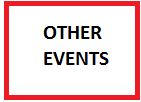And the 3rd lecture at the LTMMC happened on Aug 28. This time again there were about 35 DNB students from different parts of Maharashtra. As usual I arrived at the venue about an hour early. (Some childhood habits die hard – my father who was a Prof in IIT Bombay and had also lived in the UK always insisted that we arrive early at any place, irrespective of the normal Indian punctuality issues!). Having reached early, I got to listen to Dr Mamta Manglani (Head of the Dept of Pediatrics) once more. Dr Manglani seemed sorry for me, but I guess she does not know that I not only love listening to her, but each time I pick up one or more of her points to put in more relevance to what I teach, immediately after her session. And, I anyway strengthen my learning, especially because she is one of the really excellent teachers that I have come across. It was not only her content, but the way she helped a slightly sleepy participant come out of his state of partial somnombulence, with a really motherly approach, and then her sympathy with firmness when she drove home some points and also her admitting that she was not great with statistics… all these points made me feel that here was one awesome teacher that students had!
My turn came next, and Dr Neha Kadhe kindly introduced me with very nice words. I told the students that I very often felt like “Munnabhai MBBS” – well actually a step more – because I not only was often referred to as Dr VS, but I ended up teaching medicos right from students to Deans. They had a hearty laugh, and I was glad that I had made them feel a bit lighter and got them ready for a couple of hours of deep learning.
This time, I had introduced slides with a new teaching method for Boolean Operators – AND, OR and NOT. I was delighted to observe that every participant seemed to have understood it perfectly. This method and the necessary slides took half day’s effort, and were obviously very well worth it.
The questions that were asked at the end of the session were:
Q) Are there more information resources than PubMed and Cochrane Library?
A) – Yes – you could check out Indmed, Medind and DOAJ
Q) Is there a way to get articles that cost so much, without paying?
A) You can get some, but not all. There are six important options:
i) For Indian Journals – check out their websites. In many cases PubMed does not link to their free articles
ii) For some Foreign Journals, the articles maybe free to us in India, Click and take a chance
iii) For the ones that are not free, copy and paste the title in Google Scholar. You may find it in an Open Archive
iv) Write to the author, if the article is recent
v) Do not forget to check your own library
vi) Check out the Indian Union Catalog – for availability in libraries in India
Q) – How can we reach you for more help?
You need to become a Friend of QMed. You can find details on our website
Vasumathi Sriganesh





